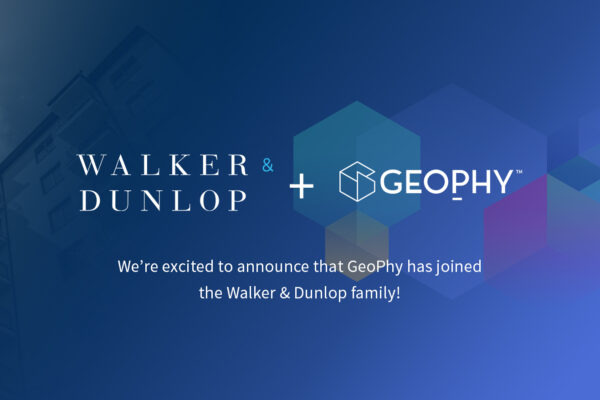AVMs for commercial real estate: New method or old wine?

Commercial real estate professionals are deeply familiar with the typical approaches to property valuation. A question we frequently get is—which approach does the GeoPhy automated valuation model (AVM) use exactly?
The answer—it’s a new, different approach, but it has similarities with both sales comps and income capitalization methods. Usually, our clients want to have a bit more detail. So, here we go. . .
Traditional Valuation Methods
First, let’s quickly recap the traditional approaches to commercial real estate valuation, and why they are used.
Cost Approach. The cost approach approximates what it would cost to reconstruct the property, plus the value of the underlying land. This is a valid method to directionally get a sense of property value, but largely theoretical because the building already exists!
Income Capitalization. The income capitalization approach takes the property’s income (or an estimate of what will be the “stable” income) and then translates that income into an estimated property value by using a “capitalization rate” or cap rate. A market cap rate is a (weighted) average of income divided by the price for properties recently sold in the market or submarket. So inherently the market cap rate is measuring the price paid per dollar of income. This method is easy to understand and calculate, but it is also relatively imprecise. Cap rates are typically averaged across multiple properties, and they don’t take into account differences in property or location-specific attributes that could affect prices. Also, cap rates are not available in markets or submarkets where there are very few transactions.
Sales Comparison. The sales comp approach is essentially taking into account what the market is currently willing to pay per square foot or per unit for similar properties. The advantage of this method is that it takes into account market prices, and through that an expectation of the future. The primary challenge is that the definition of “similar” property is subjective. For some properties, there just aren’t any great comps. The best ones may have sold a few years ago, or are in a different submarket, or have any number of factors that are substantially different than the subject property. As a result, a lot of time is spent gathering data on potentially good comps, analyzing them, and debating which are most appropriate. Essentially, a human brain chooses which comps are best, and subjectively “adjusts” them to take the dis-similar attributes of the comparable properties to make them “similar”. It’s an inexact science at best.
Discounted Cash Flow. The discounted cash flow (DCF) approach projects the future cash flows the buyer should expect to generate from the property. It takes into account rental income and expenses, plus the cost of property maintenance. It requires a look into the crystal ball of future changes in market and location-specific factors that affect demand and supply, and ultimately rental income. As an input into this approach, a variety of market benchmarks are used, including rent, expense, and tax comps. The advantage of the DCF approach is that it utilizes assumptions that can be stress-tested as input. But the flip side of that are disadvantages—it requires making fairly long term predictions, and the number of assumptions is very large, including the value of the property after 7-10 years.
None of these approaches is perfect, and that’s exactly the reason that multiple approaches are used when valuing a property. In our view, there is room for a new method, an automated valuation model, which has its advantages and disadvantages.
The GeoPhy AVM
The GeoPhy automated valuation model starts by utilizing a database of tens of thousands of actual commercial property transactions, including closed transaction prices and corresponding NOI—this provides a nationwide database of “comps”. We have key information on the properties, including net operating income, and information about the relevant local area and market for that property. For example, we know the number of schools within a 15-minute walk, and the distance to the closest restaurant.
Importantly, as new transactions happen in the market, we observe them. We have transactions streaming into our database every month. We observe when prices change, and we understand how the market capitalizes future income — across space and over time.
We then build a model. Simply put, a model represents a set of algorithms that use a variety of inputs (such as the number of schools nearby or NOI per unit) to calculate a property value estimate as an output. These algorithms take into account all the relationships between various inputs and actual prices that occurred in the market. Our model then calculates specifically how much the expected value of a building decreases for each year a building ages. It may recognize that after approximately 50 years, the impact of age becomes a less, or not at all relevant indication of building price (once a building reaches a certain age, other factors determine the price).
We call this a “nonlinear” relationship. The relationship between building age and price is not constant. Our modeling approach takes this into account. It also takes into account complex relationships between variables that are intuitive but difficult for human brains to handle. For example, a useful way for a human to pressure test a valuation is to run a sensitivity analysis. What if the 30-year mortgage rate goes up 50 basis points? How does that affect the valuation? That sounds simple, but if the 30-year mortgage rate goes up, there will likely be a drop in the stock market and a change in unemployment along with a delay or decline in upcoming supply. These variables are all related. Our modeling approach takes these relationships into account. The advantage of this approach is its increased accuracy relative to other methods. The disadvantage is that it makes the model quite complex.
Stepping back, our AVM provides a valuation estimate based on decision trees that are in turn based on a large set of sales comps. We take into account property, location, and market variables including NOI. In many ways, it is similar to a sales comp approach because it inherently takes into account “similar” properties. However, rather than using a limited set of 5 comps adjusted by human subjectivity, the GeoPhy AVM identifies relationships from across its extensive dataset of comps, substantiated by a standardized algorithm. The GeoPhy AVM is also similar to the income capitalization approach because the model uses NOI and transaction prices for past sales as input into the model. This allows the model to “understand” relationships between those two data points (and that relationship is the very definition of a cap rate).
Why do we need another approach to valuation?
Each valuation approach has its pros and cons. The key benefits of the GeoPhy AVM are:
1. It takes a few seconds and takes no manual effort;
2. It works in submarkets where there are no, or insufficient, comps;
3. It is objective, without the inherent bias of a human.
We believe a GeoPhy AVM can be a helpful complement to other methods of valuation, especially for specific use cases where a client wants a quick, objective, and/or low-effort valuation. Good examples of this include the originators at a lender who put together a quote, or an owner of a portfolio of commercial properties or loans who seek updated snapshots of portfolio value.
If you’d like to see GeoPhy’s Commercial AVM in action, sign up for a demo here.


